 Loading... Please wait...
Loading... Please wait...Products
- Solar Panels
- Solar Panel Kits
- Solar Generators
- Inverters
- Inverter Monitoring
- Inverter Accessories
- Balance of Systems
- Racking and Mounting
- Rails
- Flashings
- Splice Kits
- Stopper Sleeves
- Conduit Mounts
- Attachments
- Brace Assembly
- Base Mount
- Brackets
- Bolts
- Clamps
- Caps
- L-Feet
- Washers
- Skirt
- Lugs
- Tilt Legs
- Hooks
- Stand-Offs
- Ballast Bay
- Top of Pole Mount
- Side of Pole Mount
- Flush Mount Kits
- Ground Mount Kits
- Roof Mount Kits
- Hardware Packages
- Wire Management
- Batteries
- Battery Accessories
- Charge Controllers
- Tools and Supplies
- View All Products
Solaris Blog - Trina Solar
Hanwha Q Cells vs Trina Solar: What’s Best?
Posted by Brandi Casey on 9th Mar 2020

Hanwha Q Cells and Trina Solar are two of the world’s largest and most recognized solar manufactures. Both provide high-efficiency solar panel solutions backed by their over 40 years combined experience in the solar photovoltaic field at affordable price points. Both manufacturers offer modules for residential, commercial and specialty installations among their diverse product line offerings.
These offerings include monocrystalline, polycrystalline, half-cut cell technology, high watt, and high efficiency in low light environments to name a few. Much of their technology is dedicated to improving their panels overall efficiency. For example, half cut cells reduce loss caused by conditions such as: partial shading, low-light days/environments; as well as decreasing the changes of ‘hot spots’ developing on the panel.
Hanwha Q Cells and Trina Solar solar panels come in at an affordable mid-range price point. They also offer extensive product and linear performance warranties, with low degradation rates and high expected output at the twenty-five-year benchmark. In addition, both companies’ modules have completed extensive in-house and outside tests for durability, performance and reliability and passed at or above standards.
In this Hanwha Q Cells vs Trina Solar solar panel comparison, we will explore the following:
- Specifications and Technology
- Average Cost Per Module
- Potential ROI
- Warranty and Degradation Rate
- And Solaris Recommendations
Specifications and Technology
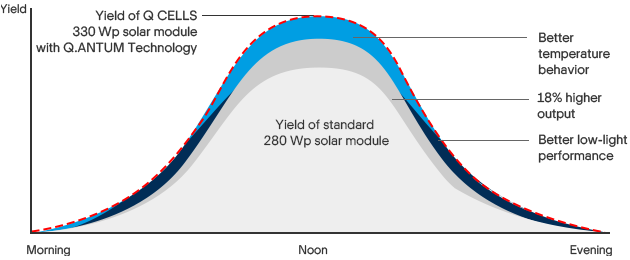
While Hanwha Q Cells and Trina Solar utilize and develop similar technologies, their cell technology varies. Hanwha Q Cells QANTUM cells are treated with their special nano coating, which functions as a mirror that reflects rays of sunlight back into the cell to generate more electricity. This technology has been tested and proven to have better low light performance under other standard solar modules (280 Wp in the case of the test). The same test showed the modules to have 18% higher output under normal conditions as well as better temperature behavior.
Trina
Solar’s cells utilize high performing PERC cells
, PERC cells are used across a number
of high efficiency solar manufacturers, they are proven to have a higher efficiency
rating and hold more of their energy potential over time. Trina Solar combines
this technology with high transmission, AR coated, heat strengthened glass,
which assists not only in keeping the modules cool, but “bounces” light back to
the cell, much like the QANTUM technology.
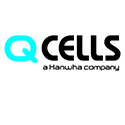 |
Model # | Max. Power | Efficiency | Cell Count | Information |
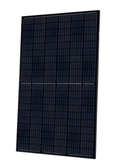 |
Q.PEAK DUO-BLK-G5-310 |
310 Watts |
18.1% |
120 Half Cut (60 Cell Equivalent) |
Pricing Specifications Warranty |
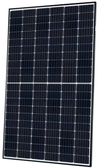 |
Q.PEAK DUO-G5-325 |
325 Watts |
19.3% |
120 Half Cut (60 Cell Equivalent) |
Pricing Specifications Warranty |
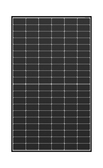 |
Q.Peak DUO G7-325 |
325 Watts |
19.3% |
120 Half Cut (60 Cell Equivalent) |
Pricing Specifications Warranty |
| Avg. Watts: | 320 Watts | Avg. Efficiency: | 18.9% | ||
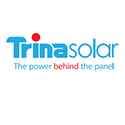 |
Model Number | Watts | Efficiency | Cell Count | Downloads |
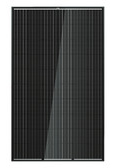
|
TSM-305-DD05A.05 (II) |
305 Watts |
18.6% |
60 Cell |
Pricing Specifications Warranty |
 |
TSM-315-DD05H.05 (II) |
315 Watts |
19% |
120 Half Cut (60 Cell Equivalent) |
Pricing Specifications Warranty |
 |
TSM-320-DD06M.05 (II) |
320 Watts |
18.8% |
120 Half Cut (60 Cell Equivalent) |
Pricing Specifications Warranty |
 |
TSM-370-DE14A (II) |
370 Watts |
19% |
72 Cell |
Pricing Specifications Warranty |

|
TSM-375-DE14A (II) |
375 Watts |
19.3% |
72 Cell |
Pricing Specifications Warranty |

|
TSM-380-DE14A (II) |
380 Watts |
19.5% |
72 Cell |
Pricing Specifications Warranty |

|
TSM-395-DE15H (II) |
395 Watts |
19.4% |
144 Half Cut (72 Cell Equivalent) |
Pricing Specifications Warranty |

|
TSM-400-DE15H (II) |
400 Watts |
19.7% |
144 Half Cut (72 Cell Equivalent) |
Pricing Specifications Warranty |

|
TSM-395-DE15M (II) |
395 Watts |
19.4% |
144 Half Cut (72 Cell Equivalent) |
Pricing Specifications Warranty |

|
TSM-400-DE15M (II) |
400 Watts |
19.7% |
144 Half Cut (72 Cell Equivalent) |
Pricing Specifications Warranty |
| Avg. Watts: | 365.5 Watts | Avg. Efficiency: | 19.24% |
*The table above reflects some of the available solar panels from Hanwha Q Cells and Trina Solar, and provides a quick overview of their technology. Click the image or view the specifications to learn more.
Winner: Trina Solar
The available lines of Trina Solar modules exceed Hanwha Q Cells offerings. Trina’s modules also offer higher overall wattage and efficiency. It is important to compare Hanwha Q Cells newer line panels, such as the G7, which is comparable to Trina Solar modules with comparable wattage.
Average Cost per Module
The below table reflects cost averages based on the average output of the Hanwha Q Cells and Trina Solar modules in the above chart. Hanwha Q Cells solar panels average cost is $0.63/watt while Trina Solar’s average cost starts at $0.65/watt.
When compared with other mid-range solar panels like Canadian Solar or Mission Solar, both Q Cells and Trina come in at a lower average cost per watt. Trina Solar's average efficiency rating with their new TallMax line has the highest efficiency rate across the mid-range modules, and is comparable to the premium manufacturer Panasonic's average efficiency rating.
| Manufacturer | Average Cost | Average Efficiency | Warranty |
| Hanwha Q Cells | $0.63/watt | 18.9% | 12-yr Product | 25-yr Performance |
| Trina Solar | $0.65/watt | 19.24% |
10-yr Product | 25-yr Performance |
| Mission Solar | $0.71/watt | 18.96% | 12-yr Product | 25-yr Performance |
| Panasonic | $0.95/watt | 19.99% | 25-yr Product | 25-yr Performance |
*Average cost and efficiency based on pricing and ratings as of the posting of this article.
To fully account for your ROI period and overall potential savings, refer to the Warranty and Degradation Rate section for further details.
Winner: Hanwha Q Cells
Hanwha Q Cells modules come in at a lower price point than Trina Solar modules. In addition, they offer a longer warranty period.
Potential ROI
In order assist in calculating your potential ROI, we have designed to similar composition roof top systems. For the purposes of comparison, we will be using the Hanwha Q Cells Q.PEAK DUO-G7 325 and the Trina Solar TSM-320-DD05M.05 (II) solar panels to create a system that is approximately 7kW.
- Q Cells - 325 watts x 22 panels = 7,150 watts or a 7.15kW System
- Trina Solar - 320 watts x 22 panels = 7,040 watts or a 7.04kW System
The system will use Enphase Energy microinverters, with monitoring and accessories. Both systems will be built with IronRidge XR100 racking in a 2x11 configuration (2x rows and 11x columns), racking will include the rails, mounts, clamps, grounding lugs and all necessary equipment for mounting the solar panels on a shingle roof. Both systems also include basic permitting services.
The below system does not include: State and Federal Tax Rebates, and balance of systems items (such as PV wire, disconnect boxes, circuit breakers, etc.). Be sure to calculate all tax rebates and average between $200 - $500 for the additional balance of systems items for roof mounted systems.
Hanwha Q Cells |
Trina Solar |
|
| Solar Panels | Q.PEAK DUO-G7 325 | TSM-320-DD05M.05 (II) |
| Microinverters |
Enphase IQ7-60-2-US |
Enphase IQ7-60-2-US |
| Accessories |
Trunk Cable Termination Caps Disconnect Tool |
Trunk Cable Termination Caps Disconnect Tool |
| Monitoring |
IQ+ Combiner with Envoy |
IQ+ Combiner with Envoy |
| Roof Mount Racking | IronRidge XR100 Comp. Roof Mount Kit | IronRidge XR100 Comp. Roof Mount Kit |
| Other |
Permit Plan Set Labels |
Permit Plan Set Labels |
| Sub Total | $9,838.12 | $9,943.92 |
| Est. Shipping | $360.00 | $360.00 |
| Avg. Total | $10,198.12 | $10,303.92 |
*Pricing calculated based on pricing as of the posting of this article. Learn more about how to size your system here, to request a system quote fill out our intake form here.
Investment Cost
The systems are comparable in cost, Hanwha Q Cells system is just over $100 less than the Trina Solar System.
- Hanwha Q Cells - $10,198.12 / 7,150 Watts = $1.43/watt
- Trina Solar - $10,303.92 / 7,040 Watts = $1.46/watt
Energy Production
Both systems will produce around 900kWh per month, by taking the average cost per kilowatt hour for the United States ($0.12), we can determine that both systems provide about $108 in monthly savings every year.
- 900kWh x $0.12 = $108 monthly savings
ROI Period
Based on the bill of materials above, and excluding outside rebates and expenses, the ROI period of the above systems are as follows:
- Hanwha Q Cells - $10,198.12 / $108 = ~94.43 months or 7.87 year ROI period
- Trina Solar - $10,303.92 / $108 = ~95.41 months or 7.95 year ROI period
The systems are nearly identical in terms of cost and the bill of materials, excluding the modules and the size of the IronRidge stopper sleeve size.
Winner: Tie
Both Hanwha Q Cells and Trina Solar module systems have an ROI period under one year. If you are considering either Hanwha Q Cells or Trina Solar for your next solar project, be sure to compare how their average cost per watt and ROI period compares.
Warranty and Degradation Rate
The warranty time period of solar modules and the degradation rate can assist you in accounting for your future energy savings. Hanwaha Q Cells has offers a product warranty period of 12 years, Trina Solar's warranty is 10 years. This puts Q Cells slightly ahead of both Trina, and most other mid-range modules, by two years.
The linear performance warranty covers how much of the nameplate power you can expect to lose as the panel ages. Degradation rate is the rate at which the panel degrades, the lower the better, while expected output at the 25 year benchmark is the guaranteed amount of power the panel will be producing at that time, in this case, higher is better.
|
Degradation Rate
|
25 Year Output
|
|
|
Hanwha Q Cells
|
3% (yr 1), 0.6% (yrs 2-25+)
|
83% |
|
Trina Solar
|
3% (yr 1), 0.68% (yrs 2-25+)
|
80.6% |
The average degradation rate of solar modules is 0.82%, in this case, both manufactures outperform. However, the 0.08% differences has an affect on the total output of the module at 25 years.
- Hanwaha Q Cells 325w Panel - 325 Watts x .83 = 269.75 Watts at 25 yrs
- Trina Solar 320w Panel - 320 Watts x 0.806 = 257.92 Watts at 25 yrs
The degradation rate should be calculated when sizing out your solar energy system in order to plan for your future energy use, in general, it is recommended to oversize your solar energy system, particularly when100% energy coverage is required.
Winner: Hanwha Q Cells
Hanwha Q Cells has a lower degradation rate, higher expected output, and longer product warranty than Trina Solar, making them the winner in terms of both their warranty period and expected modular output.
Solaris Recommendations
Hanwha Q Cells and Trina Solar both provide high-efficiency modules that outperform their mid-range competitors in a number of areas. In terms of cost, both Q Cells and Trina come in at a low mid-rage cost per watt. Both also report lower degradation rates than traditional modules, Q Cells outperforms the industry standard of 82% output while Trina Solar under-performs at just over 80%. Trina's average efficiency rating is higher than Q Cells, which should also be considered when calculating how well your panels will perform into the future.
The technologies developed by the manufacturers enhance light capturing through two different methods, Q Cells QANTUM layer on the cell itself, and Trina Solar with their coated glass. Both technologies bounce light rays into the modular cell in order to be absorbed and converted into energy. Half cut cell methods used by both solar panel innovators further enhance efficiency by cutting down on the occurrence of outside factors that hinder the modules overall performance. By focusing on light capturing, the solar panels are capable of working well in low light environments as well.
Both manufacturers have strengths, Hanwha Q Cells average costs are lower, and their expected output higher than Trina Solar. However, Trina has a higher average efficiency rating, and a wider selection of high watt modules. Which module you select may depend on your site conditions and electrical needs. Installation sites with limited roof space may benefit from Trina's higher watt modules, while those concerned with future energy production may want to consider Q Cells due to their higher output rating. Either manufacturer will provide highly efficient, reliable solar modules that are backed by industry leading companies.
See Here: Canadian Solar vs Mission Solar: What's Best?
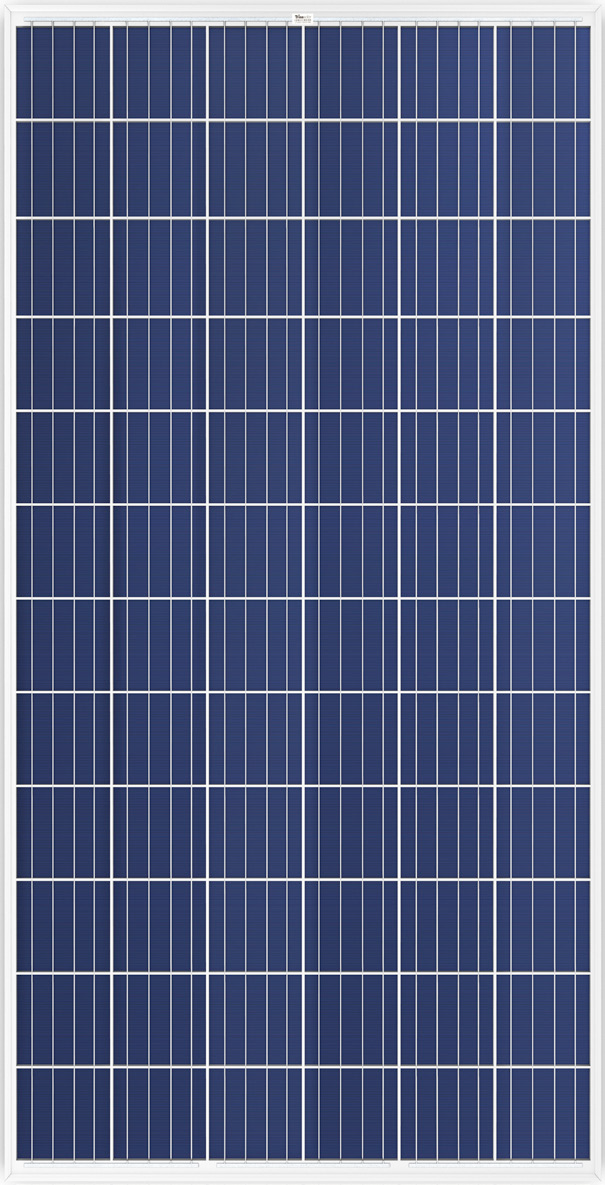
Trina Solar PD Series Solar Panels
Trina Solar offers innovative, reliable products that are highly efficient and backed by a strong customer centered company. Trina Solar is well known for being one of the leading companies in the solar industry for customer service. From initial installation to the end of your warranty period, they are easy to contact and have friendly and reliable support. While [...]
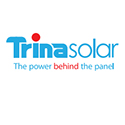
Trina Solar "The power behind the panel"
Founded in 1997, Trina Solar is a leading manufacturer of crystalline silicon photovoltaic modules and an industry leader in system integration. Focusing on such areas as the global solar market, becoming the industry leader in solar modules, solutions and service, and innovation; Trina Solar is a company to keep your eye on. In recent months Trina has started to become [...]



